1. find the vertex, focus, directrix, and focal width of the parabola.

Mathematics, 28.01.2020 17:55, Rixi1227
8.08, part 1
1. find the vertex, focus, directrix, and focal width of the parabola.
negative 1 divided by 16 times x squared = y
a) vertex: (0, 0); focus: (0, -4); directrix: y = 4; focal width: 16
b) vertex: (0, 0); focus: (-8, 0); directrix: x = 4; focal width: 64
c) vertex: (0, 0); focus: (0, 4); directrix: y = -4; focal width: 4
d) vertex: (0, 0); focus: (0, -4); directrix: y = 4; focal width: 64
2. find the standard form of the equation of the parabola with a focus at (0, -8) and a directrix at y = 8.
a) y = negative 1 divided by 32 x2
b) y2 = -32x
c) y2 = -8x
d) y = negative 1 divided by 8 x2
3. find the standard form of the equation of the parabola with a focus at (5, 0) and a directrix at x = -5.
a) y = 1 divided by 20 x2
b) 20y = x2
c) x = 1 divided by 20 y2
d) y2 = 20x
4. a radio telescope has a parabolic surface, as shown below.
a parabola opening up with vertex at the origin is graphed on the coordinate plane. the height of the parabola from top to bottom is 1 meter and its width from left to right is 8 meters.
if the telescope is 1 m deep and 8 m wide, how far is the focus from the vertex?
a) 1 m
b) 2 m
c) 4 m
d) 16 m
5. find the center, vertices, and foci of the ellipse with equation x squared divided by 36 plus y squared divided by 100 = 1.
a) center: (0, 0); vertices: (0, -10), (0, 10); foci: (0, -8), (0, 8)
b) center: (0, 0); vertices: (-10, 0), (10, 0); foci: (0, -6), (0, 6)
c) center: (0, 0); vertices: (-10, 0), (10, 0); foci: (-8, 0), (8, 0)
d) center: (0, 0); vertices: (0, -10), (0, 10); foci: (-6, 0), (6, 0)
6. find the center, vertices, and foci of the ellipse with equation 3x2 + 7y2 = 21.
a) center: (0, 0); vertices: the point negative square root of seven comma zero and the point square root of seven comma zero ; foci: (-2, 0), (2, 0)
b) center: (0, 0); vertices: (-7, 0), (7, 0); foci: ordered pair negative 2 square root 10 comma 0 and ordered pair 2 square root 10 comma 0
c) center: (0, 0); vertices: the point zero comma negative square root of seven and the point zero comma square root of seven. ; foci: (0, -2), (0, 2)
d) center: (0, 0); vertices: (0, -7), (0, 7); foci: ordered pair 0 comma negative 2 square root 10 and ordered pair 0 comma 2 square root 10
7. graph the ellipse with equation
x squared divided by 4 plus y squared divided by 49 = 1.
a) a horizontal ellipse is shown on the coordinate plane centered at the origin with vertices at negative 7, 0 and 7, 0 and minor axis endpoints at 0, 2 and 0, negative 2.
b) a vertical ellipse is shown on the coordinate plane centered at the origin with vertices at 0, 7 and 0, negative 7 and minor axis endpoints at negative 2, 0 and 2, 0.
c) a horizontal ellipse is shown on the coordinate plane centered at (2, 7) with vertices at negative 5, 7 and 9, 7 and minor axis endpoints at 2, 9 and 2, 5.
d) a vertical ellipse is shown on the coordinate plane centered at 2, 7 with vertices at 2, 14 and 2, 0 and minor axis endpoints at 0, 7 and 4, 7.
8. find an equation in standard form for the ellipse with the vertical major axis of length 18 and minor axis of length 6.
a) x squared divided by 81 plus y squared divided by 9 = 1
b) x squared divided by 9 plus y squared divided by 3 = 1
c) x squared divided by 9 plus y squared divided by 81 = 1
d) x squared divided by 3 plus y squared divided by 9 = 1
9. find the vertices and foci of the hyperbola with equation quantity x plus 4 squared divided by 9 minus the quantity of y minus 5 squared divided by 16 = 1.
a) vertices: (5, 0), (5, -8); foci: (5, -8), (5, 0)
b vertices: (5, -1), (5, -7); foci: (5, -9), (5, 1)
c) vertices: (-1, 5), (-7, 5); foci: (-9, 5), (1, 5)
d) vertices: (0, 5), (-8, 5); foci: (-8, 5), (0, 5)
10. graph the hyperbola with equation quantity x plus 2 squared divided by 49 minus the quantity of y plus 3 squared divided by 4 = 1.
a) a vertical hyperbola is shown on the coordinate plane centered at 2, 3 with vertices at 2, 10 and 2, negative 4.
b) a horizontal hyperbola is shown on the coordinate plane centered at the origin with vertices at negative 7, 0 and 7, 0.
c) a horizontal hyperbola is shown on the coordinate plane centered at negative 2, negative 3 with vertices at negative 9, negative 3 and 5, negative 3.

Answers: 2
Other questions on the subject: Mathematics


Mathematics, 21.06.2019 19:00, adrianwoods1507
1c) the number 131 is a term in the sequence defined by the explicit rule f(n)=5n-4. which term in the sequence is 131? 2a) write the first four terms of the function f(n)=n^2-1 2b) what is the 10th term of the sequence defined by the explicit rule f(n)=n^2-1 2c) the number 224 is a term in the sequence defined by the explicit rule f(n)=n^2-1. which term in the sequence is 224?
Answers: 2

Mathematics, 21.06.2019 23:30, jlopez113
The bottom of ignacio's desktop is 74.5cm from the floor. ignacios sits in his adjustable chair, and the tops of his legs are 49.3cm from the floor. each clockwise rotation of the knob on the chair raises ignacio's legs by 4.8cm. write an inequality to determine the number of clockwise rotations, r, ignacio could make with the knob without his legs touching the desk.
Answers: 3

Mathematics, 21.06.2019 23:40, hannahbannana98
Statement reason 1. δabc is similar to δced. given 2. 3. definition of slope 4. slope of slope of definition of slope 5. slope of × slope of multiplying the slopes 6. slope of × slope of substitution property of equality 7. slope of × slope of simplifying the right side the table contains the proof of the relationship between the slopes of two perpendicular lines. what is the reason for statement 2? a. parallel line segments that meet a common perpendicular line are proportional in length. b. the lengths of vertical and horizontal sides in congruent triangles are in a common ratio. c. trigonometric identities determine the lengths of the legs in a right triangle. d. corresponding side lengths in similar triangles are proportional in length.
Answers: 2
Do you know the correct answer?
8.08, part 1
1. find the vertex, focus, directrix, and focal width of the parabola.
1. find the vertex, focus, directrix, and focal width of the parabola.
Questions in other subjects:

History, 11.07.2019 12:30



Mathematics, 11.07.2019 12:30

Mathematics, 11.07.2019 12:30

Mathematics, 11.07.2019 12:30

Biology, 11.07.2019 12:30

Social Studies, 11.07.2019 12:30




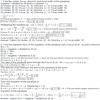
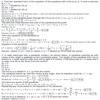
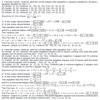
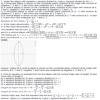
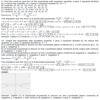
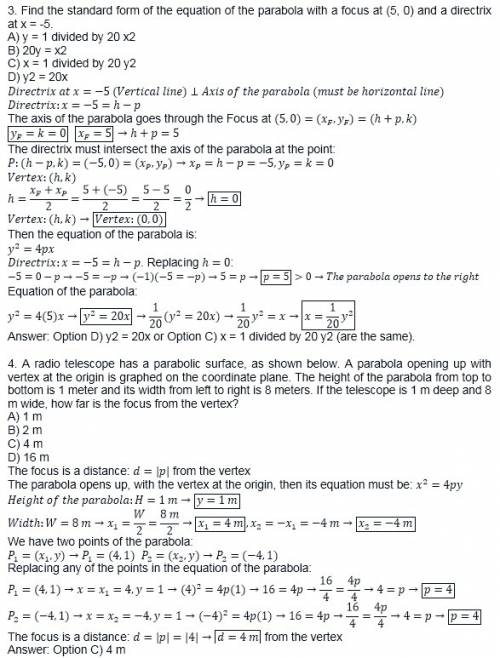

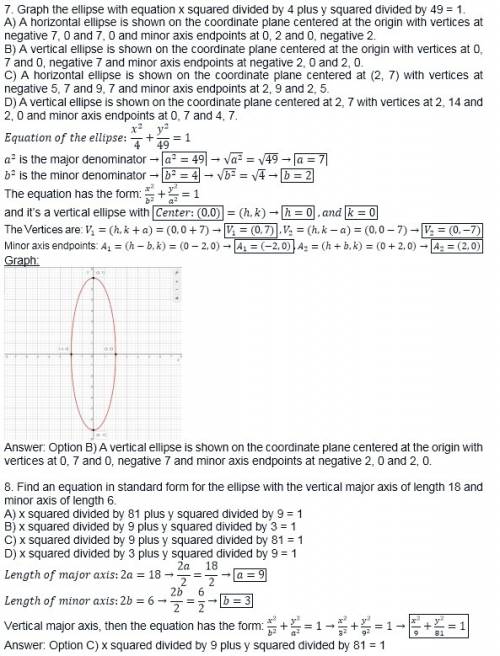


 we have vertex as (h,k).
we have vertex as (h,k).




